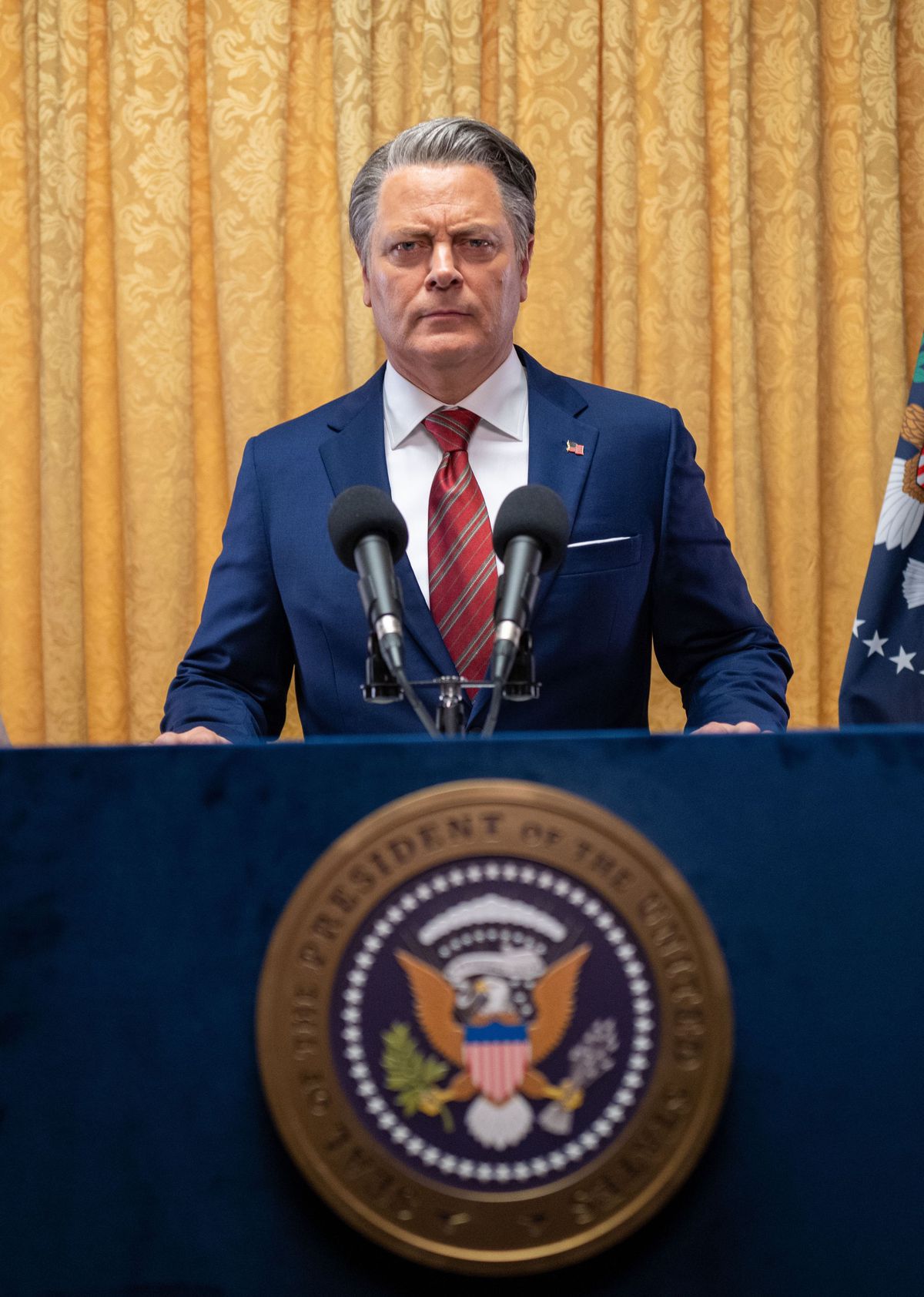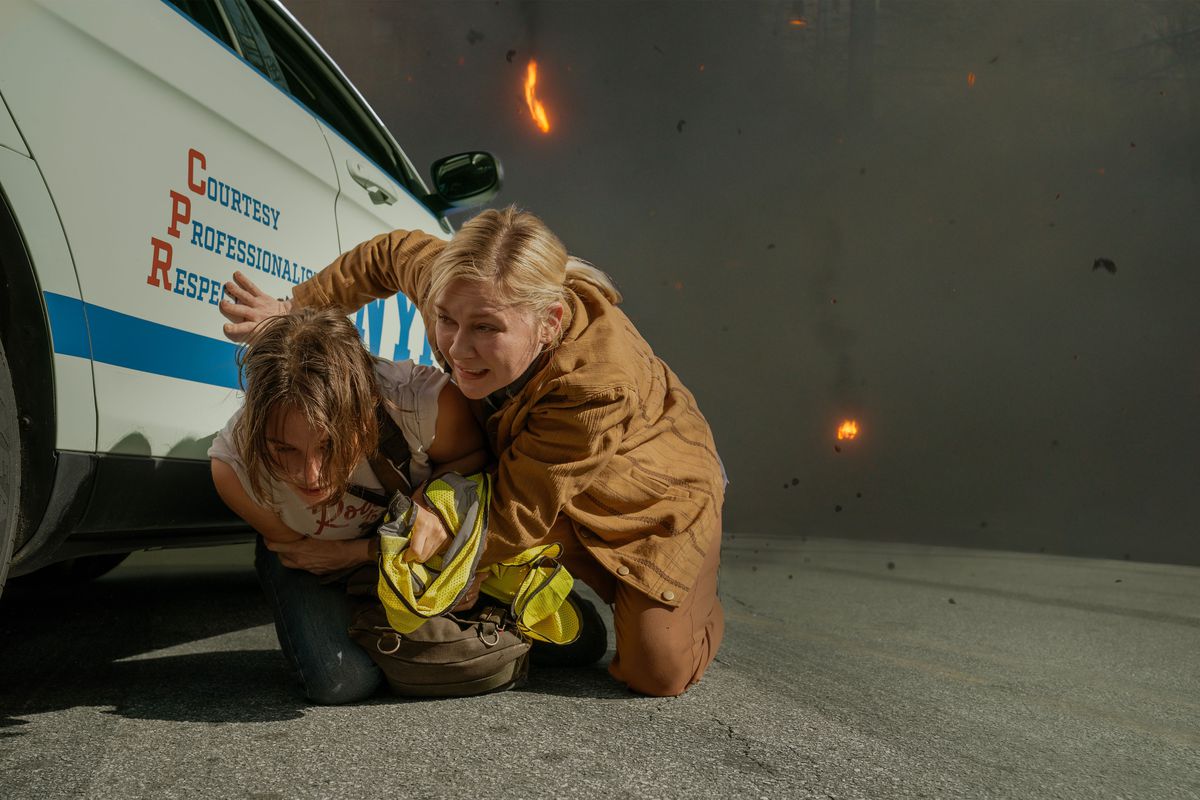The Civil War is crippling in the least likely ways imaginable
In an era of divisive, high-stakes American politics, it’s not surprising that so many people are reacting online to the very concept of Alex Garland’s Civil war as if it were inherently toxic. Garland’s latest (after the rather baffling fabulous Gentlemen) looks like a timely but opportunistic provocation, a film that can’t help but feel exploitative or far too close to home in a country whose name, the United States, sounds more ironic and ridiculous every year.
And yet that doesn’t seem to be Garland’s goal Civil war not at all. The film is about as apolitical as a story set during a modern American Civil War can be. It’s a character piece that has far more to say about the state of modern journalism and the people behind it than it does about the state of the nation.
It’s almost perverse how little Civil war reveals about the sides of the central conflict, or the causes or crises that led to war. (Viewers who show up expecting an action movie that confirms their own political prejudices and demonizes their opponents will be left mostly confused about what they’ve just seen.) This isn’t a story about the causes or strategies of the American Civil War: it’s a story about the causes or strategies of the American Civil War. personal story about the how and why of war journalism – and how the field changes for someone who reports on a war in his home country instead of on foreign soil.
Lee Miller (Kirsten Dunst) is a veteran war photographer, a celebrated, award-winning, and deeply jaded woman who has made a career out of pretending to be bulletproof in arenas where the bullets are flying – or at least bulletproof long enough to capture memorable images. lay. telling images of what bullets do to the bodies and psyches of other people. Her latest assignment: She and her old work partner Joel (Wagner Moura) have been promised an interview with the president (Nick Offerman), now in his third term and having had more than a year of public silence.
It’s a dream opportunity for a war correspondent – a chance to make history, and perhaps more importantly, to gain insight into the man whose choices seem to have been crucial in pushing the country over the border and into war . But obtaining the interview will require a journey of more than 800 miles to Washington DC, through active war zones and past hostile barricades erected by state militias or other heavily armed local forces. And along for this potentially deadly road trip is Jessie (Priscilla star Cailee Spaeny), a green but ambitious 23-year-old photographer who Lee clearly thinks will probably be murdered along the way – or the entire tour group will be murdered.

The tension between Lee and Jessie—potential mentor and her potential replacement, the past and future of their chosen careers, allies but competitors pursuing the same things within a small profession known as much for its rivalry as its compassion for interpublishing—shapes the center of Civil war, much more than the tension between certain political perspectives. Although the film comes at a time when experts continue to warn of the potential for an actual new American Civil War, Garland’s says Civil war hardly gives any tips about the details of the conflicts.
There’s plenty for viewers willing to read between the lines, about which states are in rebellion (California, Texas, and Florida are all mentioned in passing as separatist states) and about the soldiers—particularly in the South and many in rural areas—who get screen time. . But Lee’s angry exhaustion and Jessie’s fear and excitement to learn more about the profession from someone she respects are the real heart of the story.
That makes everything Civil war a film that is more about why war correspondents are attracted to the profession than about a particular perspective on current American politics. And it’s a wonderful, compelling meditation on war journalism. Lee and her colleagues are presented as half thrill-seeking adrenaline monkeys, half dutiful documentarians determined to bring back a record of events that other people don’t record. They do important work, the film suggests, but they have to be more than a little reckless, both in choosing the profession and in returning to the battlefield again and again.
Lee never makes any big speeches about the difference between reporting on the war in Afghanistan and the one in Charlottesville, but it’s clear that she’s fraying under the pressure of watching her own country in such a shaky and ragged state, with hardened soldiers on both sides demonizing other Americans in the same way. Americans have demonized entire foreign nations. Jessie, for her part, seems impervious to the weight of that reality, but still far less accustomed to cruelty and combat. The two women push each other forcefully, with the clear, beautifully drawn yet unspoken sense that when Lee looks at Jessie, she sees her own younger, dumber, softer self, and when Jessie looks at Lee, she sees her own future as a famous, capable, confident journalist.
All of this character work is built into a series of intense, riveting action sequences, as Lee’s group repeatedly risks death as they attempt to fight their way across the battle lines or close in with soldiers in field combat. The final scene, a run-and-gun battle through city streets and cramped building interiors, is a gripping thrill ride that Garland directs with the immediacy of a war documentary.

The entire film is coordinated and planned with that dynamic in mind. It is a particularly beautiful drama, filmed with a loving warmth that reflects the point of view, through the eyes of two photographers accustomed to capturing everything around them in vivid, compelling images. A late-film shot as the group drives through a forest fire is particularly beautiful, but the film overall seems designed to impress viewers on a visual level. Halfway through the film it becomes clear that Lee photographs with a digital camera, while Jessie photographs with old-fashioned film, and that this choice is important and symbolic for both.
Likewise, Garland’s shooting choices and the film’s vibrant colors continue to remind audiences that this is a film that isn’t just about documenting moments, but also captures them well enough to mesmerize audiences. In some respects, Civil war seems a bit nostalgic for an earlier era of journalism and photography. The collapse of the internet seems to have set news back to a point where print journalism dominates television or social media and no one seems to get their news online. It’s the most prominent retro aspect of a story that otherwise reflects a potential future.
What the film isn’t about is taking sides in any given current political conflict. That can surprise and disappoint the people they are drawn to Civil war because they think they know what it’s about. But it is also a relief. It’s hard for message films about current politics not to turn into clumsy polemics. It is difficult for any historical document to accurately document it as it happens. That’s the job of journalists like Jessie and Lee – people who are willing to risk their lives to bring back reports from places most people wouldn’t dare go.
And while it feels opportunistic to frame their story specifically in a new American Civil War—whether a given viewer sees that narrative choice as timely and tense or as cynically attention-grabbing—the setting still feels far less important than the vivid, emotional, rich stories. complicated drama surrounding two people, a veteran and a newcomer, each in their own unique way doing the same dangerous job. Civil war seems like the kind of movie people are most likely to talk about for all the wrong reasons, and without having seen it first. It’s not what those people will think it is. It is something better, more current and more exciting: a very fascinating war drama that is more about people than about politics.
Civil war will be in cinemas from April 12.
